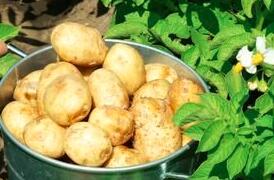CROP GENETICS & BREEDING·GERMPLASM RESOURCES·MOLECULAR GENETICS
CHENYongXian, CHENRuiJiang, DUYiZhi, ZHUJunJie, CHENWanXia, ZHAOZiHan, WANGJiChun, DUKang, ZHANGKai
【Objective】Seeking key indicators and methods for accurately characterize drought tolerance in sweet potato, and screening and identifying drought-tolerant sweet potato germplasm resources, to provide effective methods for the rapid and accurate identification of drought-tolerant sweet potato germplasm resources, and to provide material and theoretical basis for selection and breeding of high quality and drought-tolerant sweet potato varieties. 【Method】Fifty-four sweet potato germplasm resources were used as materials for drought stress experiments. By using two treatments including drought stress and control, and combining with drought pool cultivation experiment and field test, the effects of drought stress on the growth and development, physiological and biochemical characteristics, antioxidant metabolism, photosynthetic characteristics and yield of different sweet potato germplasm resources were investigated, the response characteristics of different sweet potato germplasm resources to drought were analyzed, and the effective indicators for drought tolerance evaluation in sweet potato were selected. The drought tolerance evaluation was preformed using principal component analysis, correlation analysis, direct evaluation of drought resistance coefficient, and calculation of comprehensive drought tolerance measurement value (D value) based on membership function, and the drought-tolerant sweet potato germplasm resources were screened and identified.【Result】The results obtained from the drought pool cultivation experiment showed the influences of drought treatment on the main stem length, aboveground fresh weight, underground dry weight and fresh weight of storage root were extremely significant (P<0.01), and eight drought-tolerant germplasm resources were screened based on cluster analysis of D values. In the field test, the main stem length, stem diameter, number of branches, leaf area index, leaf relative water content, total chlorophyll content, stomatal conductance, net photosynthetic rate, transpiration rate, intercellular carbon dioxide concentration, proline (Pro), malondialdehyde (MAD), peroxidase (POD), superoxide dismutase (SOD), ascorbate peroxidase (APX), catalase (CAT) showed highly significant differences (P<0.01) under drought stress when compared with control. Through the establishment of regression models, it could be initially determined that eight indicators including the leaf area index, root tip, leaf POD, leaf APX, storage root Pro, storage root SOD, storage root CAT, and yield could be used as indicators for drought tolerance identification in sweet potato. XN18111-1, 20XN18-1, XN1834-11 and XN17104-46 were classified as drought-tolerant germplasm resources according to grading of drought resistance coefficient based on yield. The D values of XN18111-1, 20XN18-1 and XN1862-61 were over 0.6 and showed high drought tolerance based on comprehensive drought tolerance evaluation. 【Conclusion】Based on results of comprehensive drought tolerance evaluation in drought pool cultivation experiment, as well as the comprehensive drought tolerance evaluation and yield evaluation in field test, XN18111-1 and 20XN18-1 were finally identified as drought-tolerant germplasm resources, which can be used as drought-tolerant breeding materials or ideal resource materials for study on drought-tolerance mechanism in sweet potato.
